

Uncovering Hong Kong’s secret land grab
Uncovering
Hong Kong’s secret land grab
Unauthorised expansions to luxury homes have been found across Hong Kong, triggering concerns over safety risks, unfairness and lax enforcement.
Home to 7.5 million people and short on space, Hong Kong has long been the world's least affordable housing market. Hundreds of thousands of residents still live in cramped subdivided flats, many of them enduring lengthy waits for public housing.
Last year, however, landslides triggered by a record-breaking downpour exposed how some of the city’s wealthiest living at Redhill Peninsula had expanded their homes with grand but unauthorised add-ons – from swimming pools to basements – on government land at essentially no cost.
Yet the high-profile case is anything but rare, according to a Post investigation that uncovered suspected unauthorised land encroachment and structures at three other upmarket estates, following a wider study by an NGO.
Here the Post presents its findings on how the rich grab land in space-poor Hong Kong.

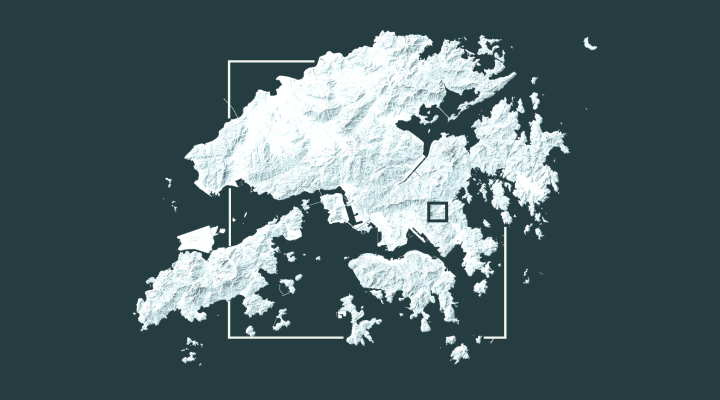
Flamingo Garden
Nestled on the lower rises of Kowloon Peak, the 16 houses in Block B of Flamingo Garden enjoy unobstructed views of Kwun Tong. Each pricey property costs as much as HK$71.8 million (US$9.18 million), with floor areas of about 2,496 sq ft.
Most are suspected of having unauthorised structures, including swimming pools and separate sheds or rooms, with some of them on a government-owned slope outside their original boundaries.
Among the 12 houses that appear to go beyond their boundaries, 11 are suspected of having structures or extensions on government land, but foundation depths, structure heights and lengths cannot be ascertained.
Four houses are suspected of having private pools that are not listed on the government’s online records.
After a Post inquiry, the government notes it will continue to take enforcement actions against suspected unauthorised structures, but stops short of saying whether it has issued any removal orders. Authorities also confirm they have not granted any short-term tenancies for additional land, promising further action if needed.
- Homes with suspected deviations
- Official estate area
- Natural slopes
-
Artificial slopes
-
Past landslides
Construction on the slope
Additions appear to sit atop the government-owned slope.

Flamingo Garden is one example among many. The Liber Research Community, an NGO, conducted research soon after the Redhill Peninsula scandal broke and found at least 173 houses suspected of illegally occupying land at luxury estates across the city.
The Post took a deep dive into three of the estates to study the extent of non-compliance by comparing live drone footage with original construction plans, the government’s lot boundary records and past satellite images to understand the citywide situation.
* NON-BUILT-UP AREA: Nature, agriculture and barren land, as well as water bodies. URBAN or BUILT-UP LAND: Land for residential (7.2%), transport (6.4%), institutional (5%), other (4.3%), industrial (2.2%) and commercial (0.4%) use.


Seaview Villas
Built on a slope boasting stunning views of Tolo Harbour, Seaview Villas comprises 18 houses, one of which was recently marked for sale at HK$50 million.
Most of the homes have undergone suspected unauthorised modification, from having fish ponds to basements.
After a Post inquiry, the government has confirmed issuing removal orders, without disclosing how many houses are affected. It says it also has not granted a short-term tenancy to any houses to lease additional land and will take action as necessary.
- Homes with suspected deviations
- Official estate area
- Natural slopes
-
Artificial slopes
-
Past landslides
The quiet, low-density neighbourhood in the hills of Tai Po enjoys a high level of privacy, keeping any potentially illegal add-ons far from prying eyes.
Modification levels
Additions to the houses range in size.
Major modification
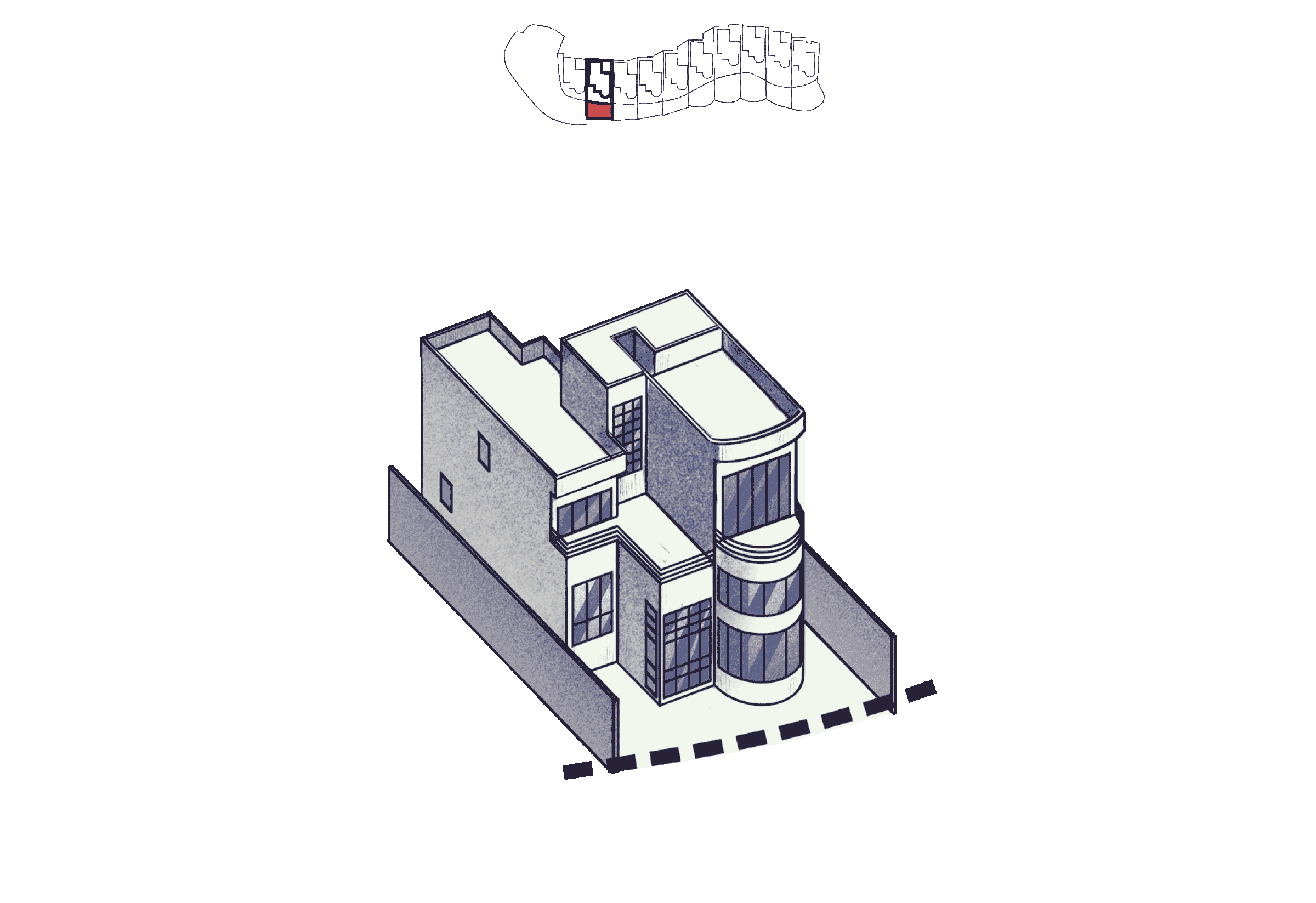
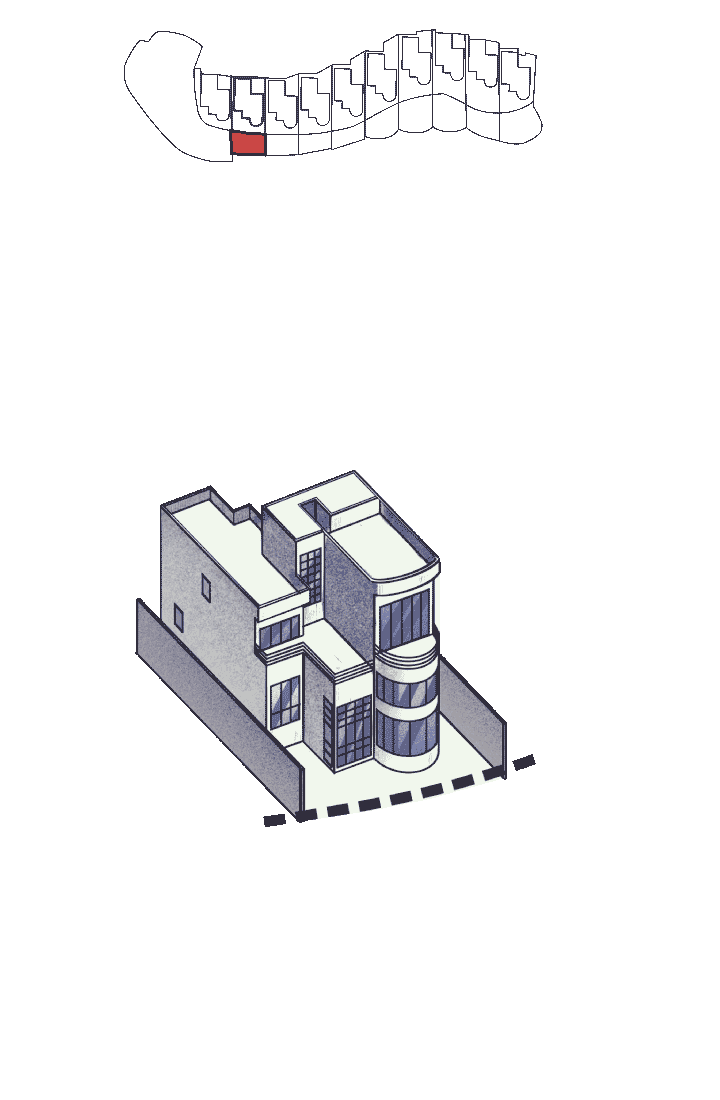
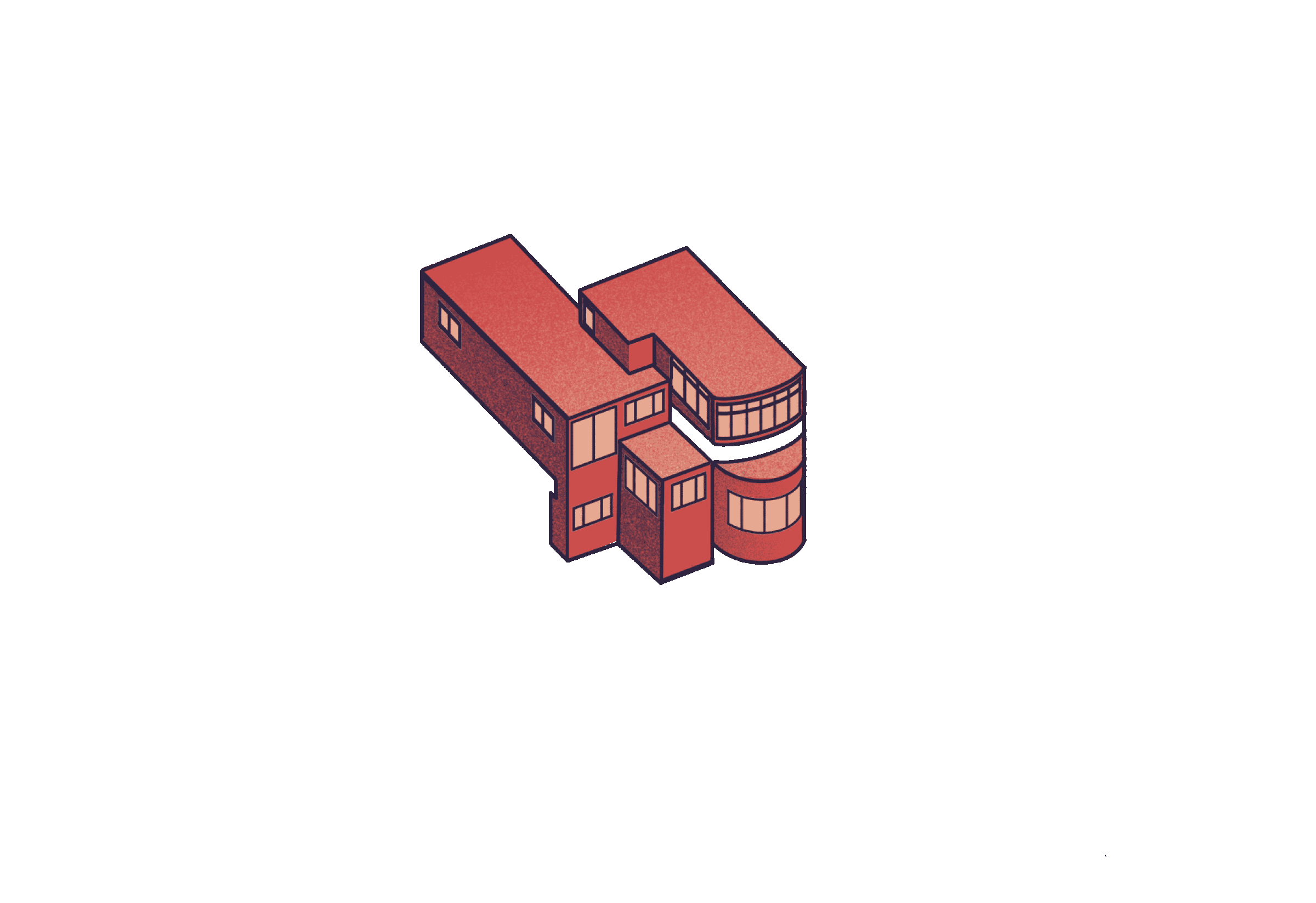
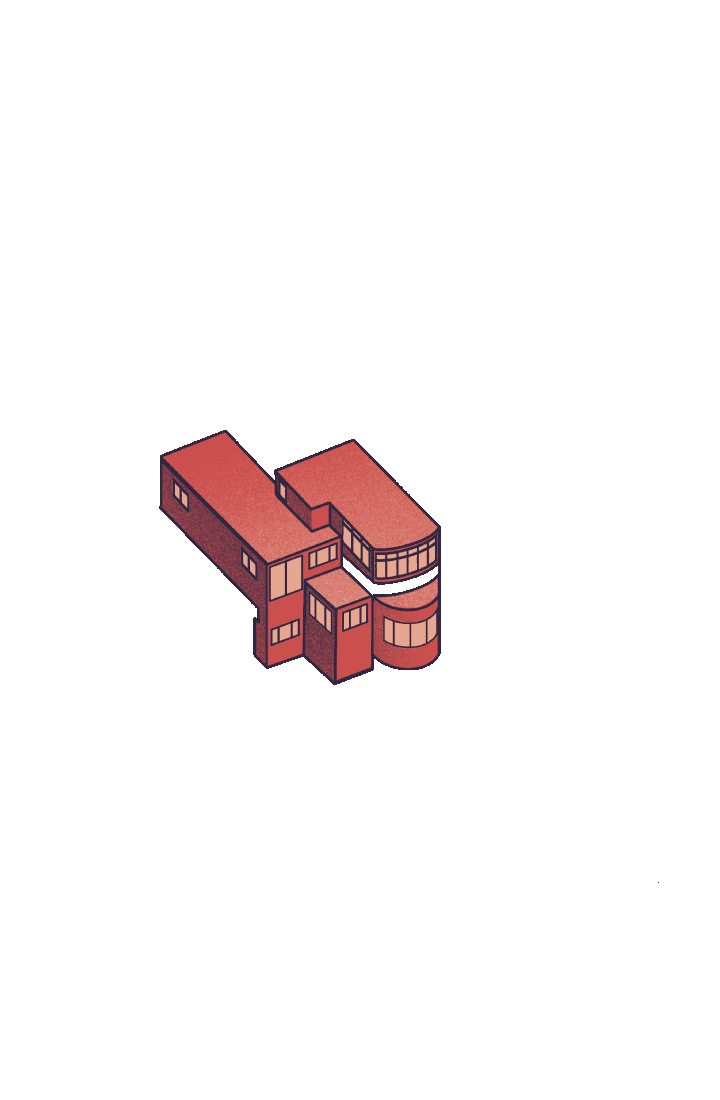


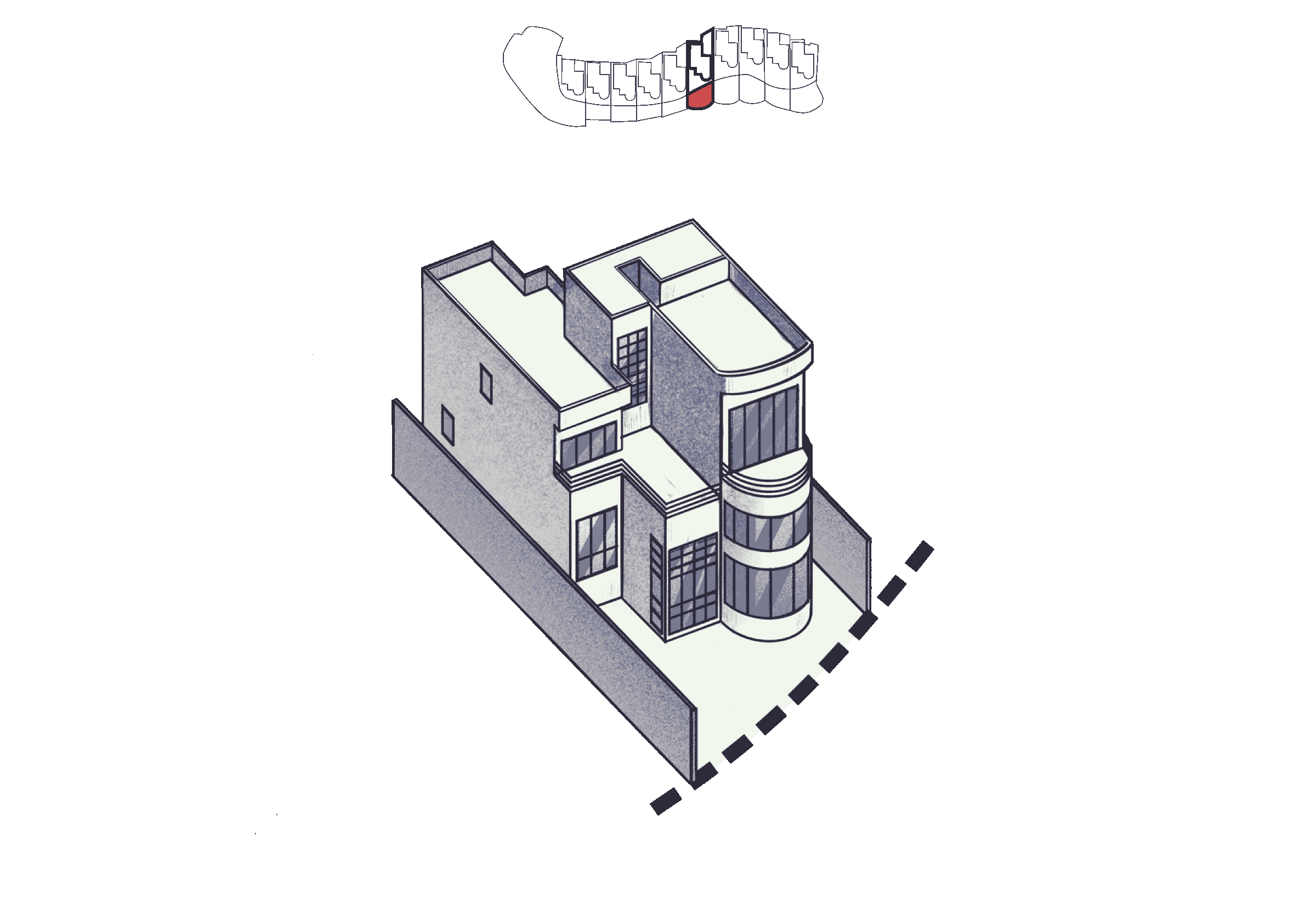
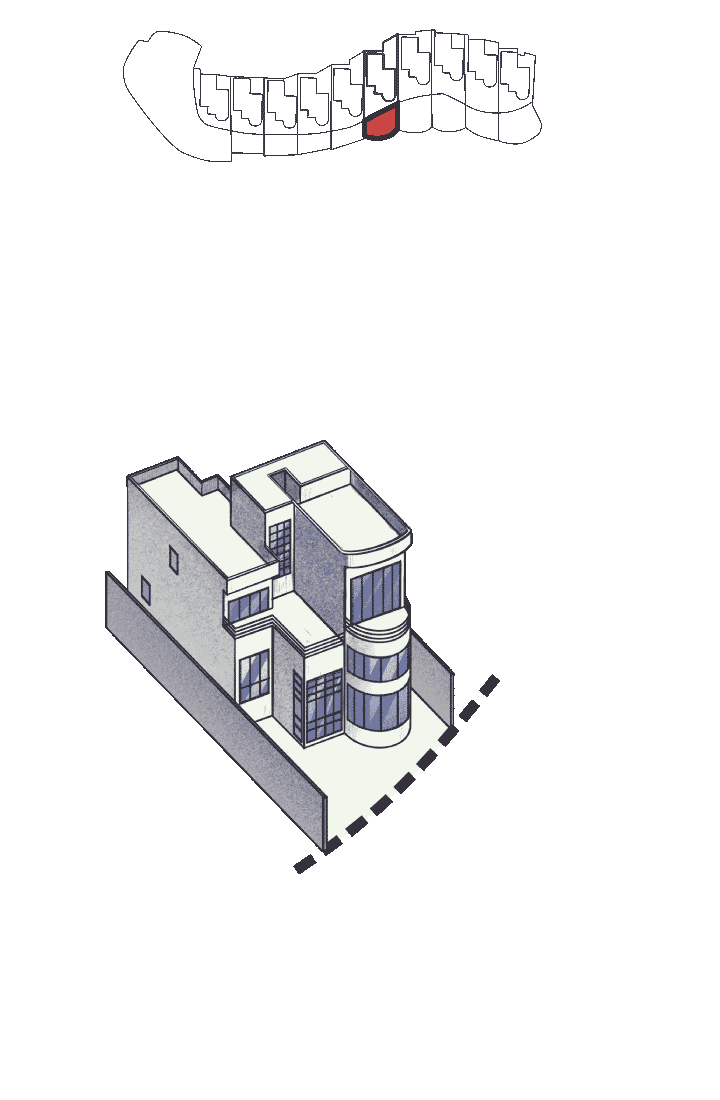
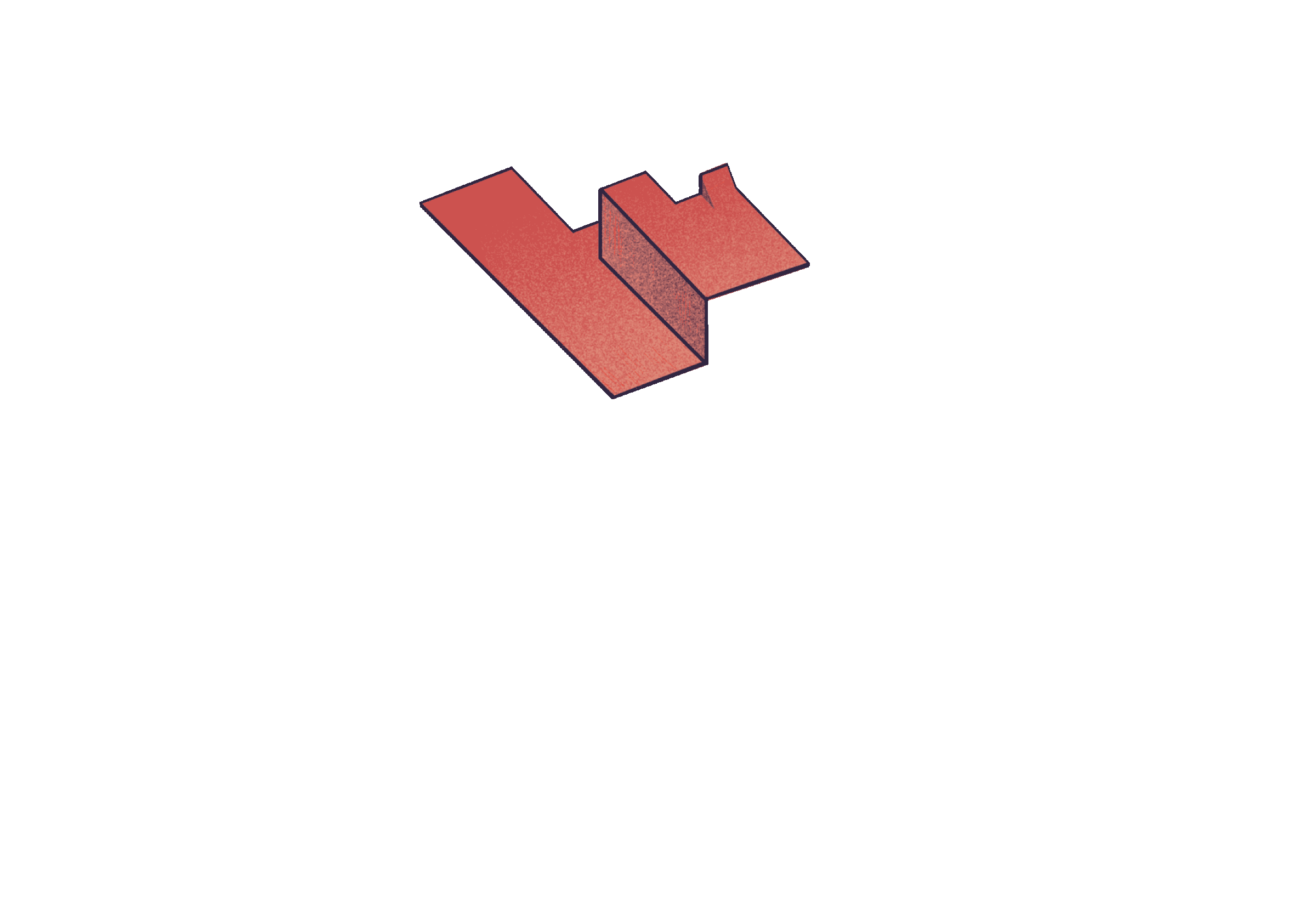

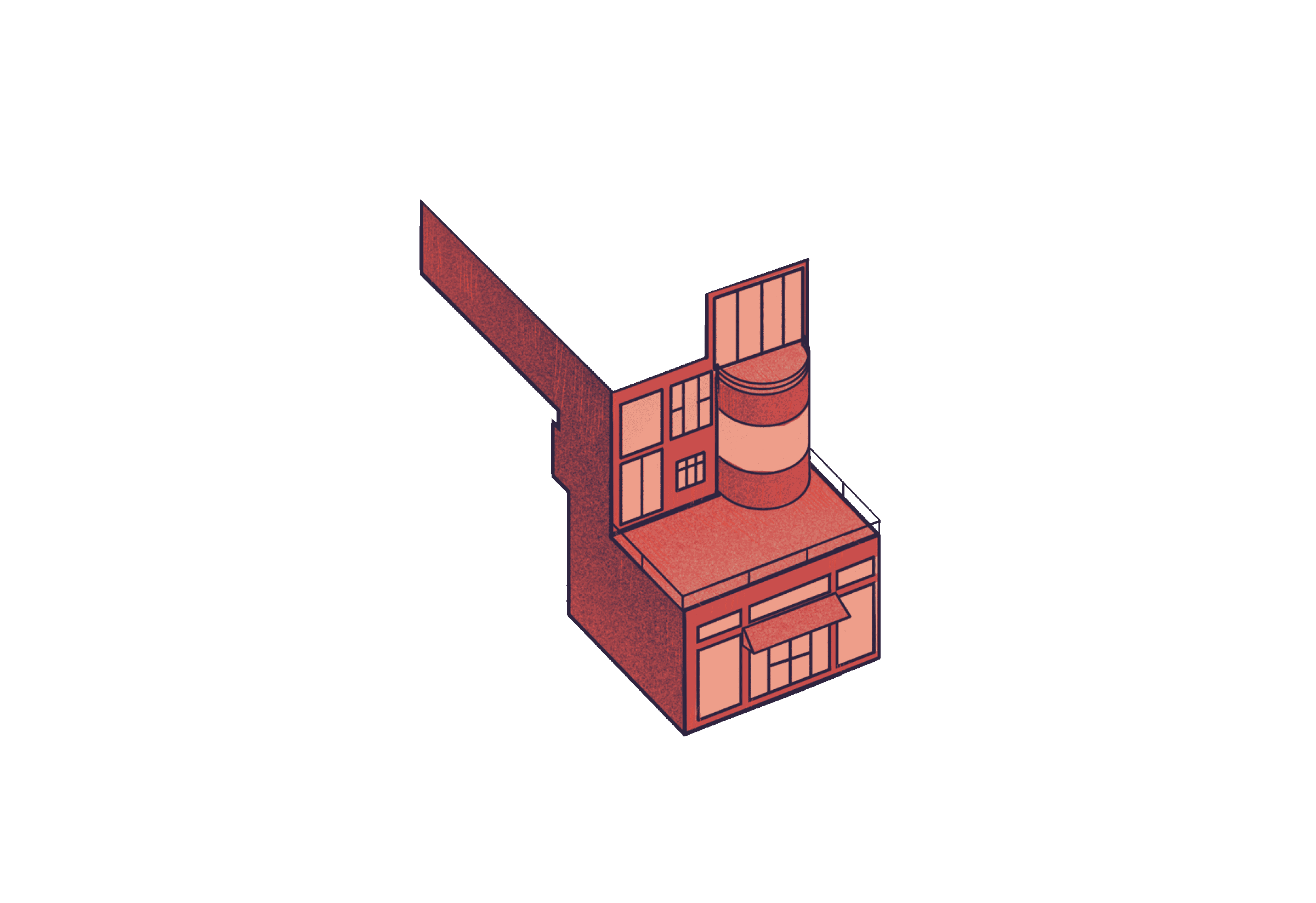
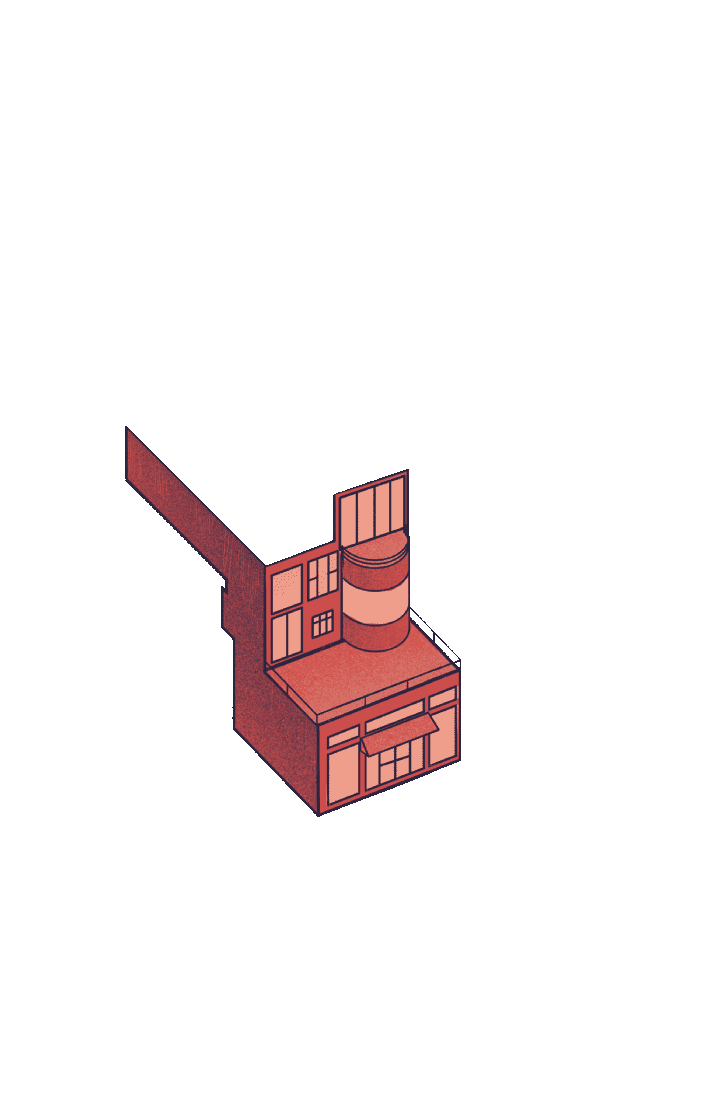


Extreme modification
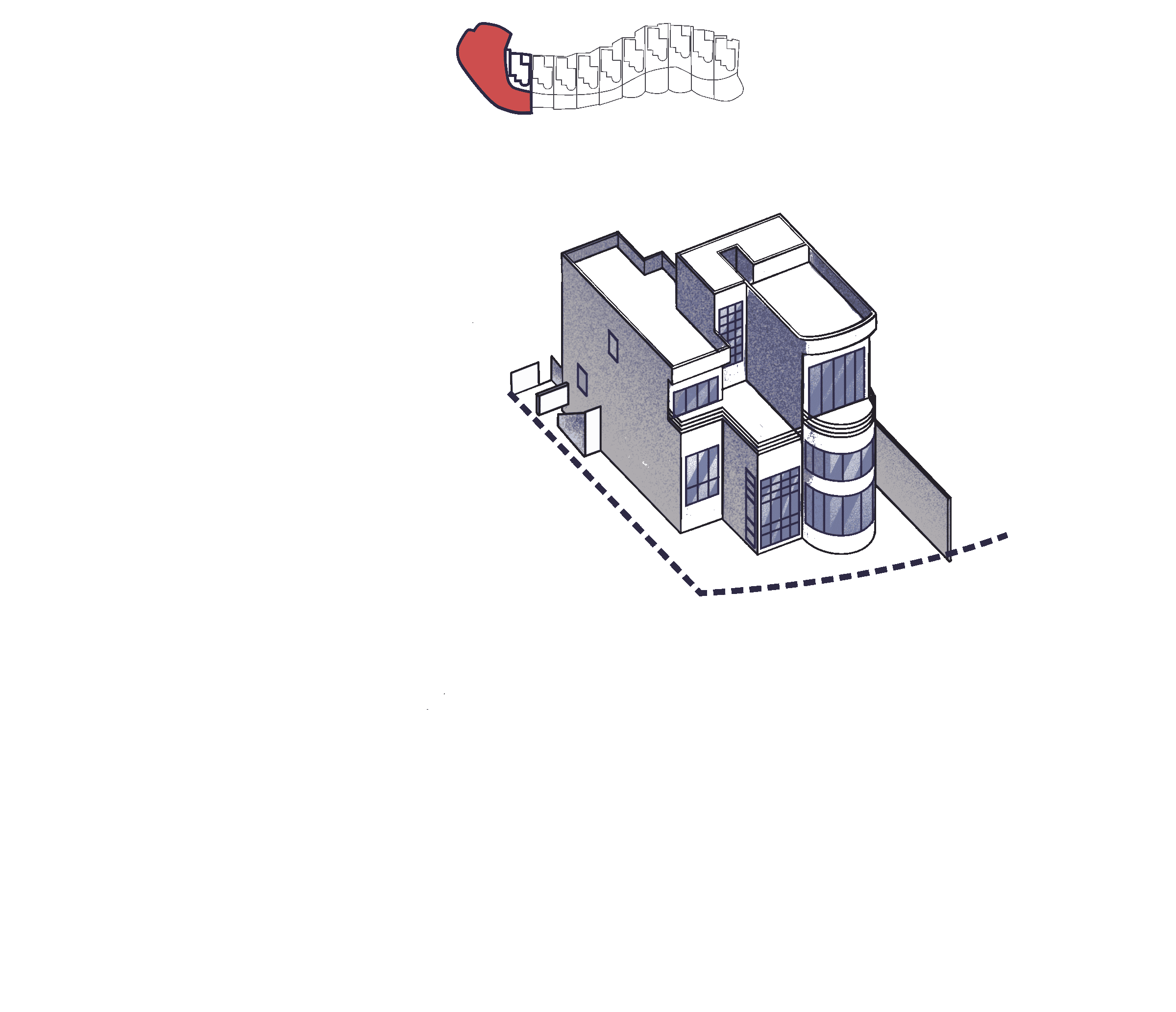
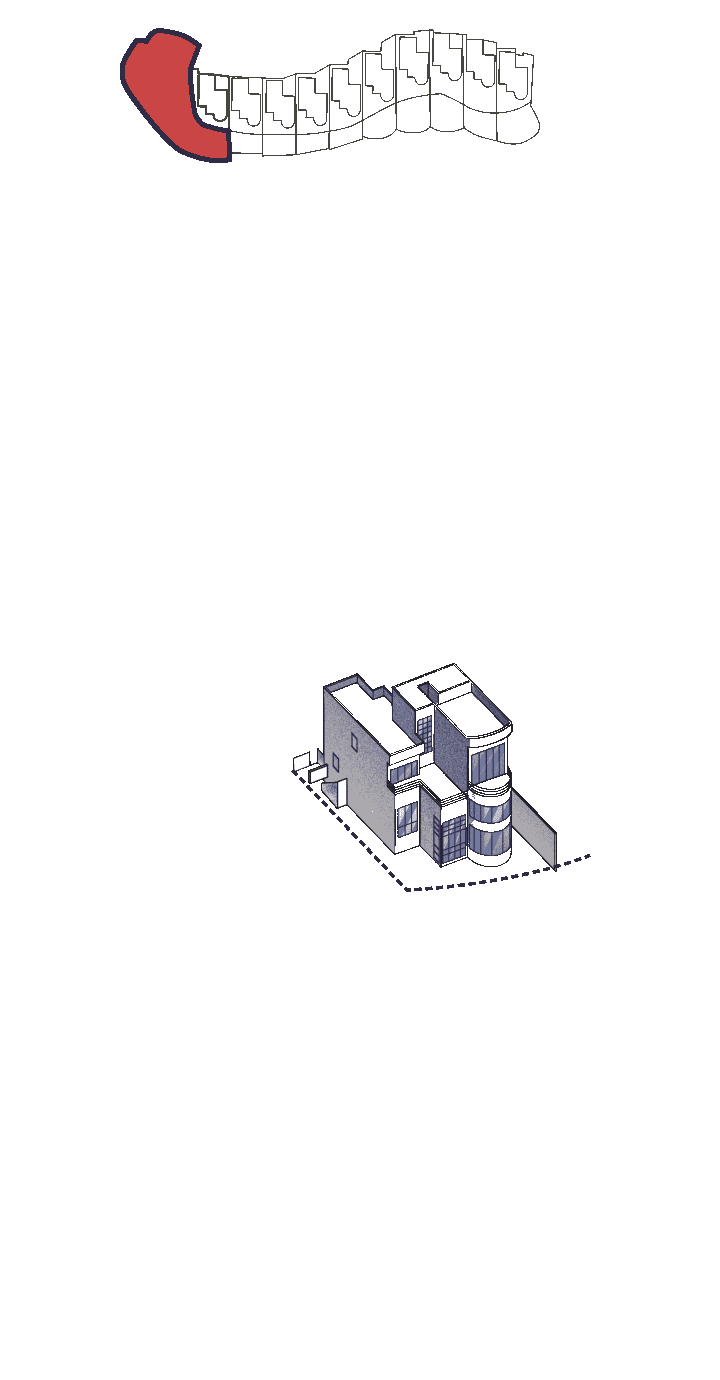






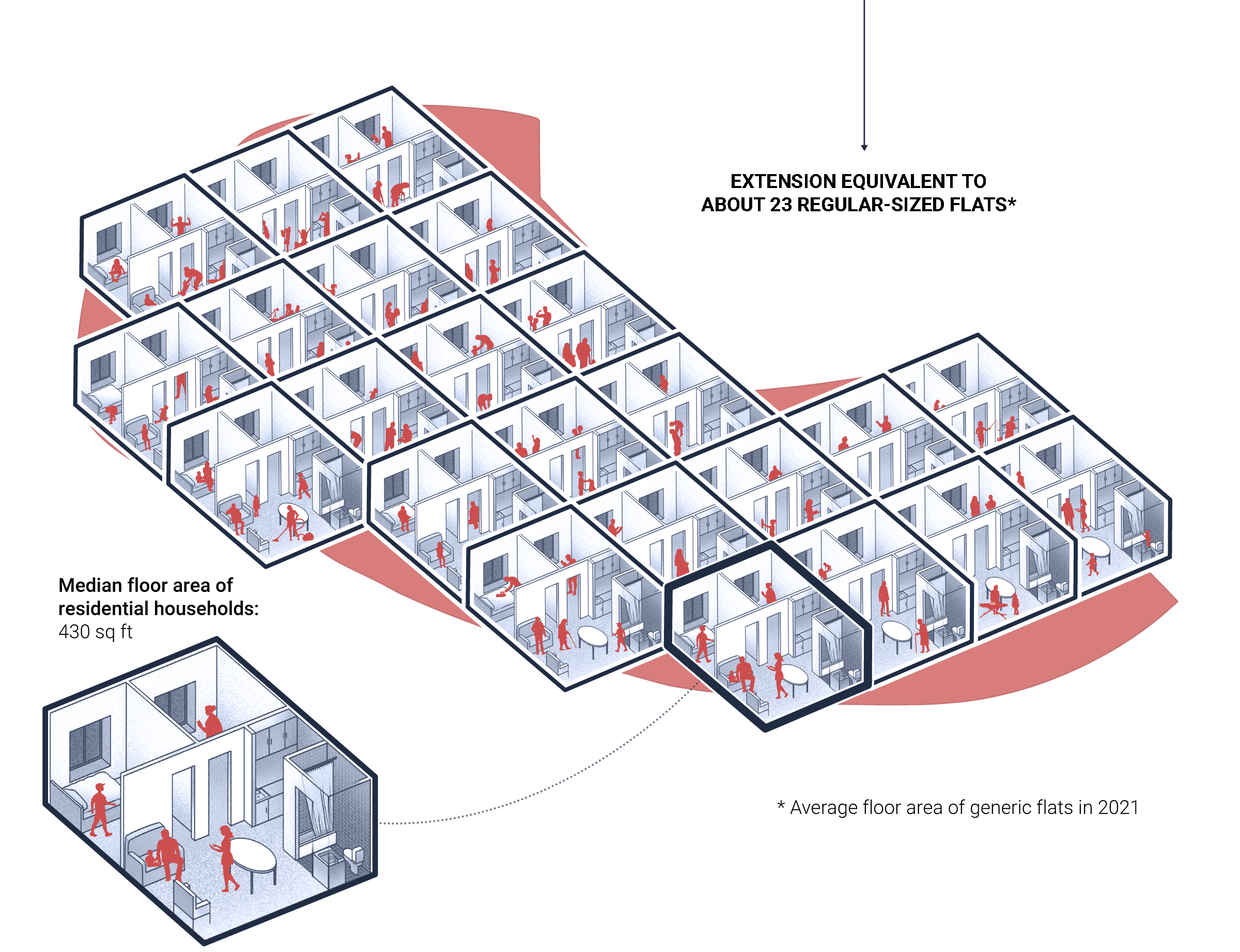
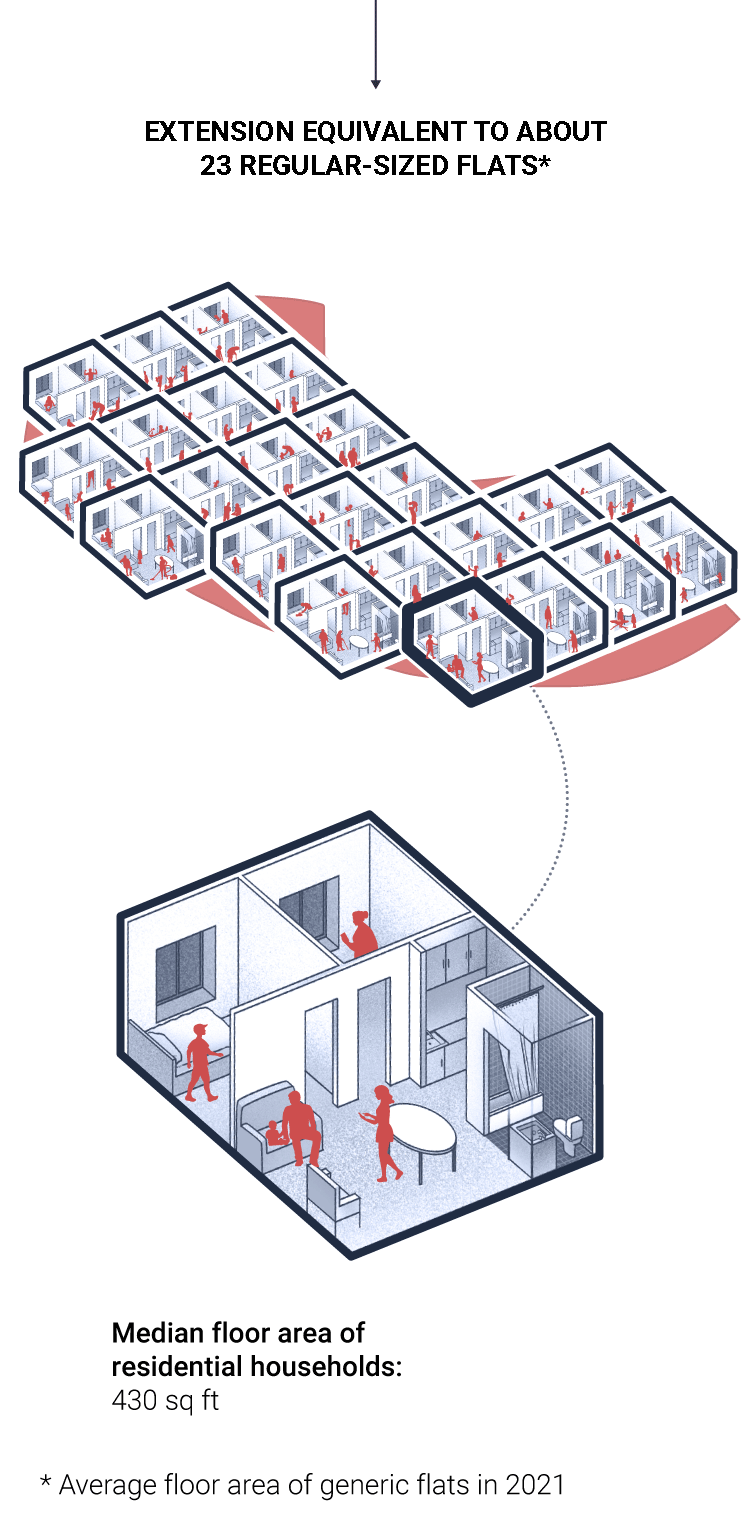
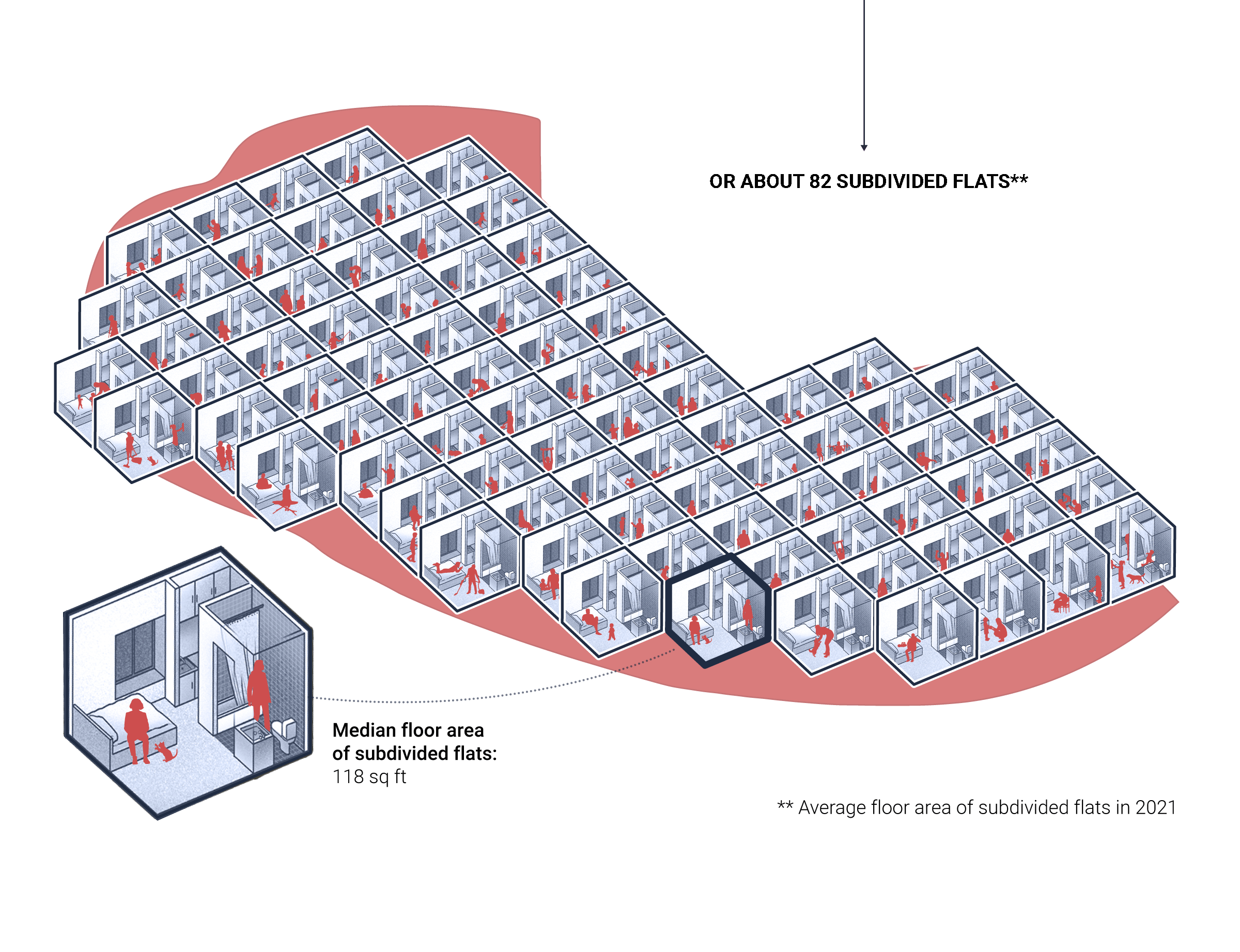
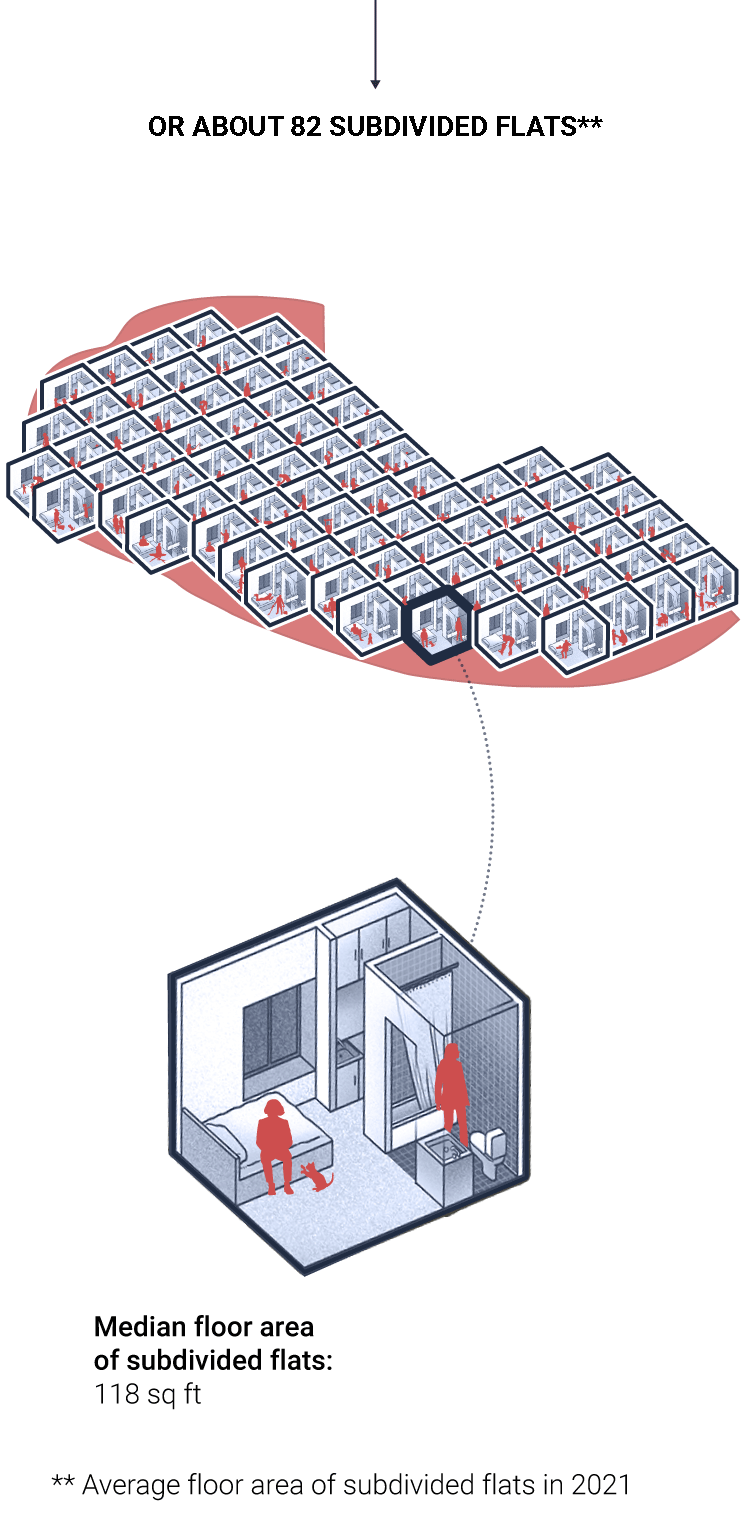
The massive scale of the extension is in sharp contrast with the conditions endured by the more than 215,000 people living in Hong Kong’s subdivided homes.


Villa Rosa
Perched above Redhill Peninsula, Villa Rosa boasts 16 houses of more than 3,300 sq ft each, with the latest sale in 2022 hitting HK$119 million and monthly rents currently reaching HK$300,000.
Most of the homes are seen with their gardens extended on government land and having unauthorised structures.
- Homes with suspected deviations
- Official estate area
- Natural slopes
-
Artificial slopes
-
Past landslides
Some of the houses increased the size of their gardens by at least double, extending beyond their allowed limits.
Up to 11 out of 16 houses are suspected of having extended their gardens onto government land without permission.
At least 13 appear to have unauthorised building works.
After a Post inquiry, the government has confirmed 13 flats occupy government land and 10 homes have unauthorised structures on their rooftops or in their gardens.
HOUSES SUSPECTED OF HAVING ADDITIONAL STRUCTURES OR EXTENDED GARDENS
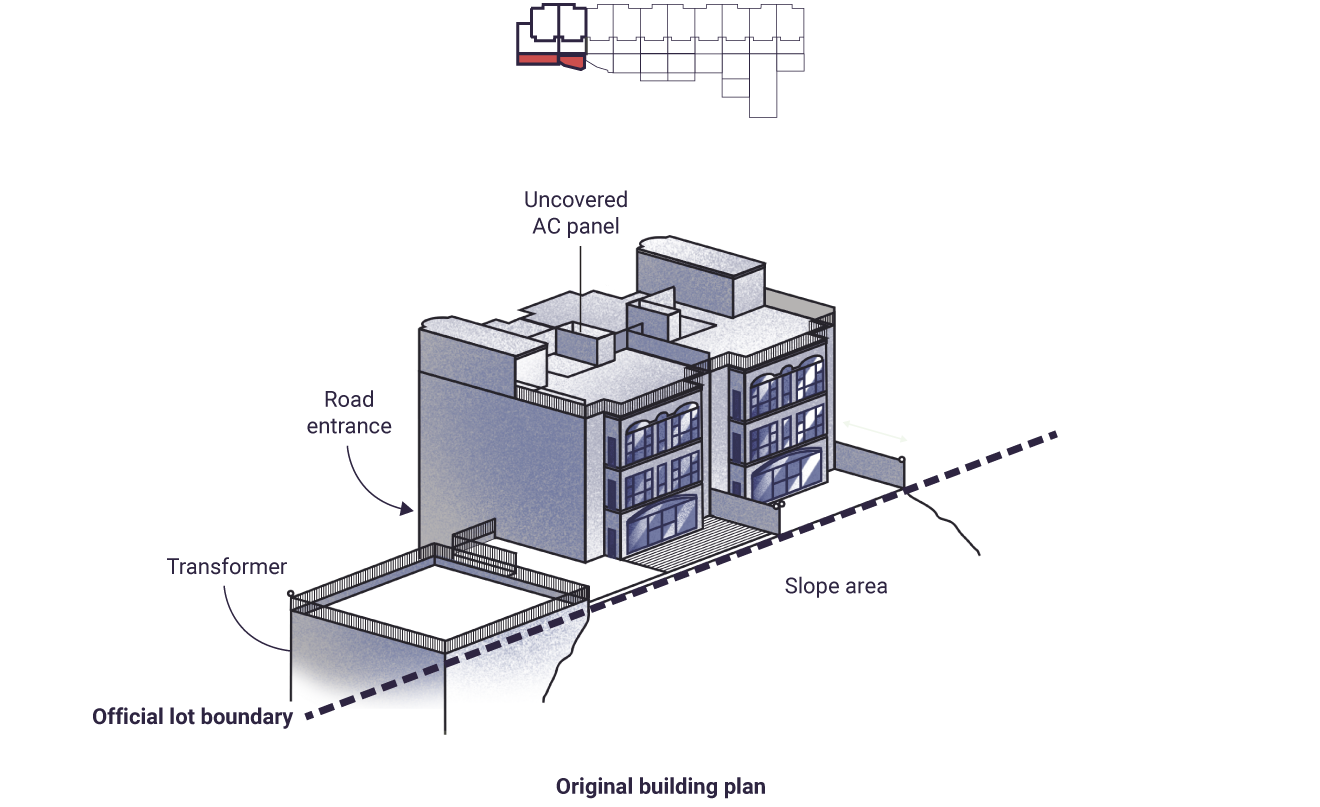

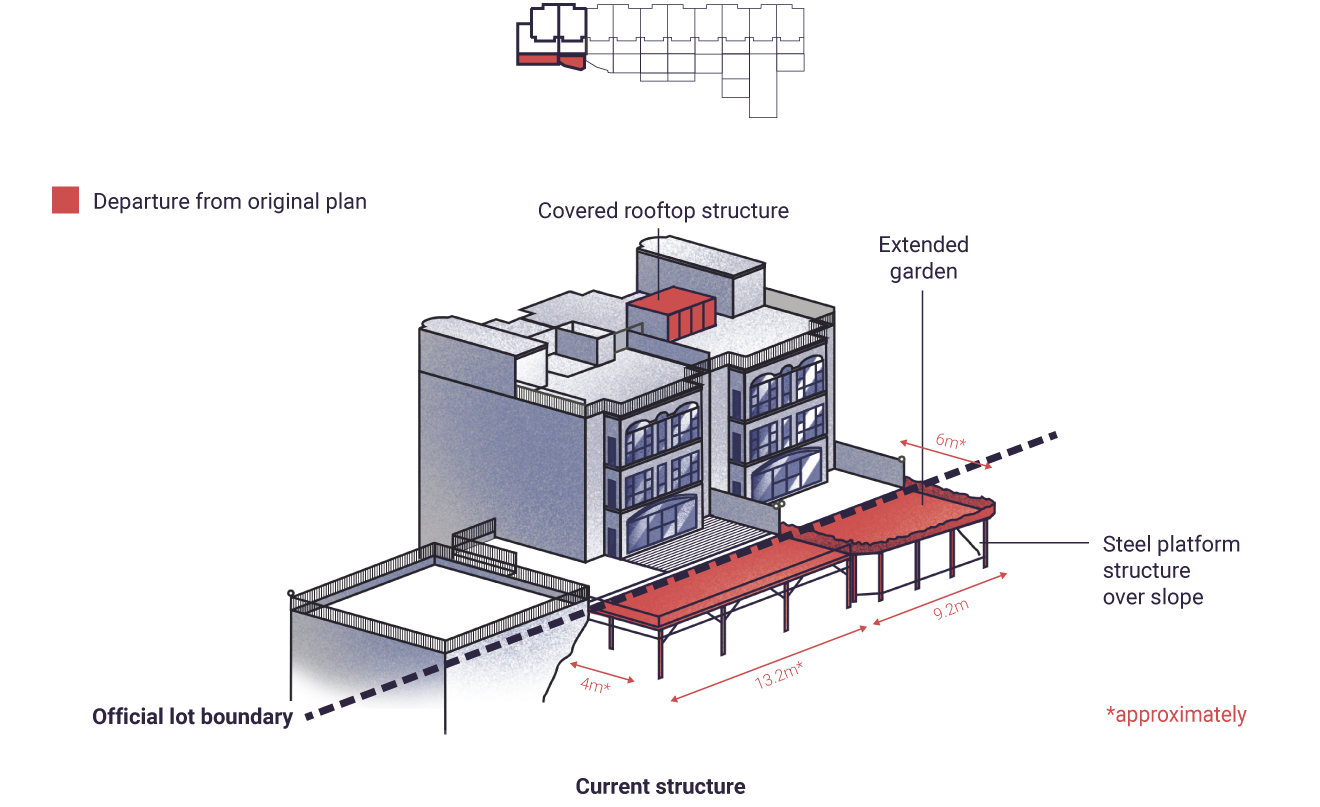
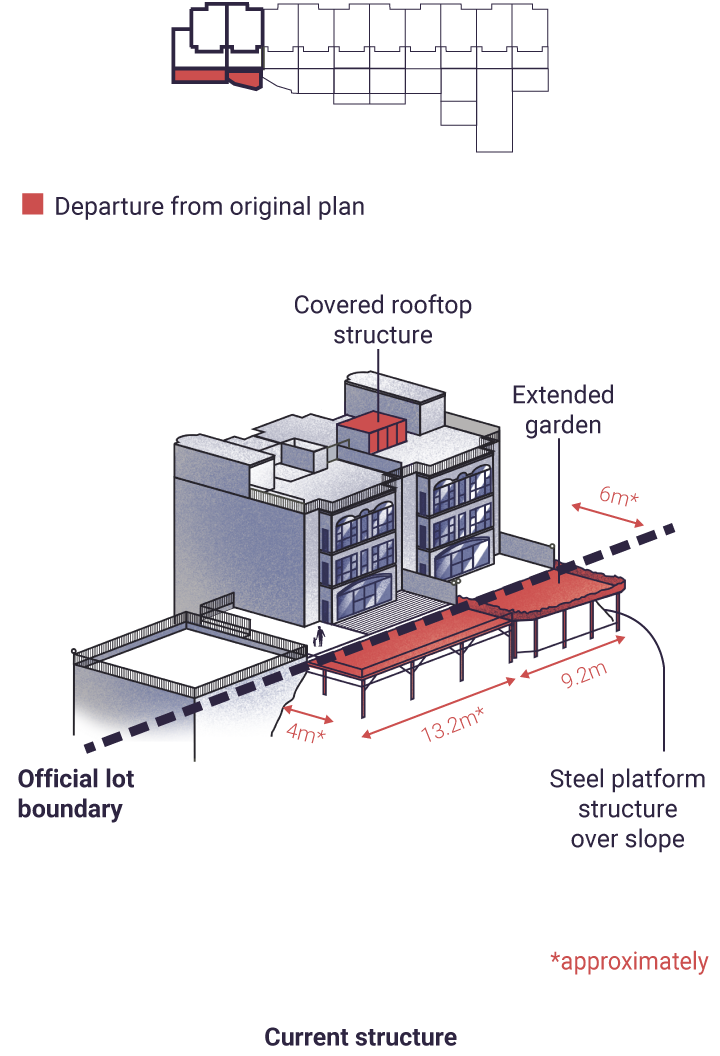
Surveyor Vincent Ho Kui-yip questions the stability of the steel platforms as they are not resting on a stable foundation.
Veteran structural engineer Ngai Hok-yan also says the structures are likely to be unauthorised, with developers most probably already having maximised the plot ratio – the development density permitted under planning rules – during the design stage.
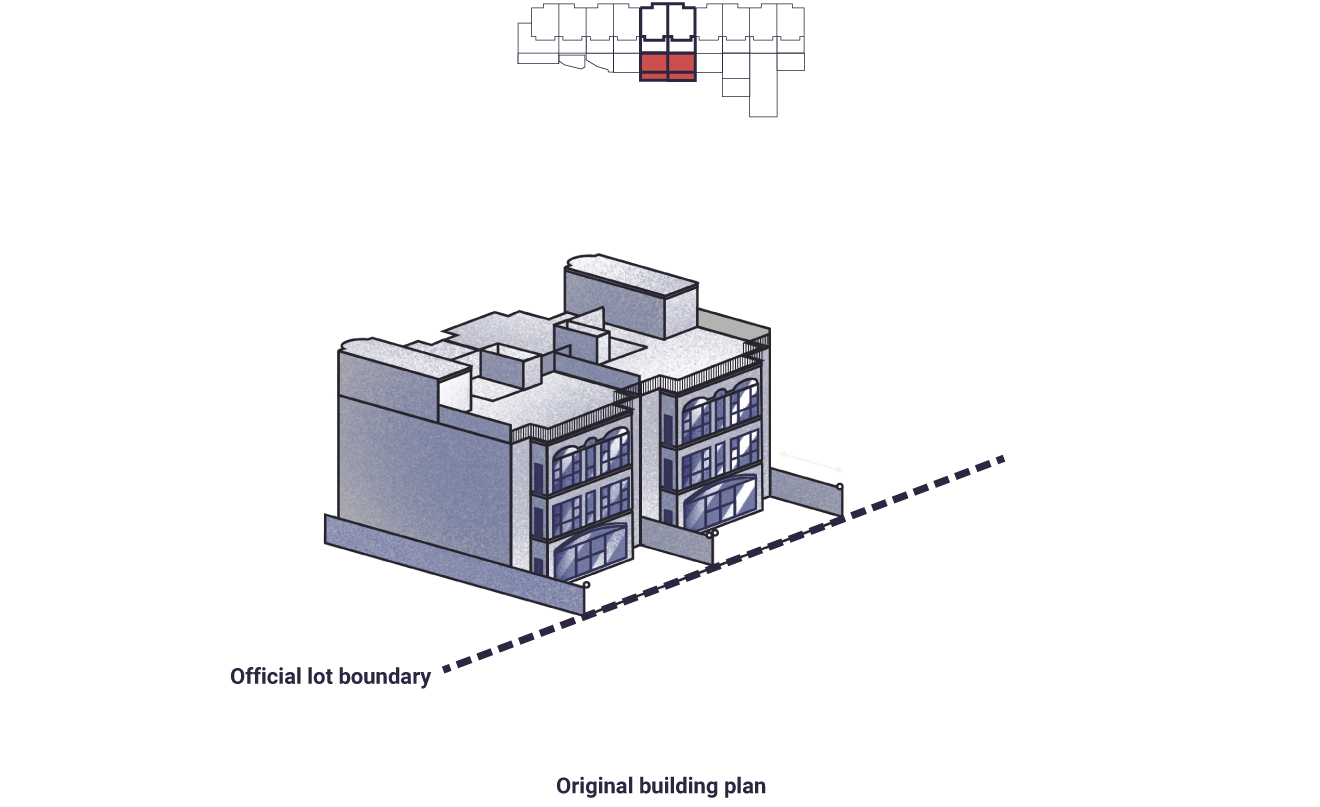
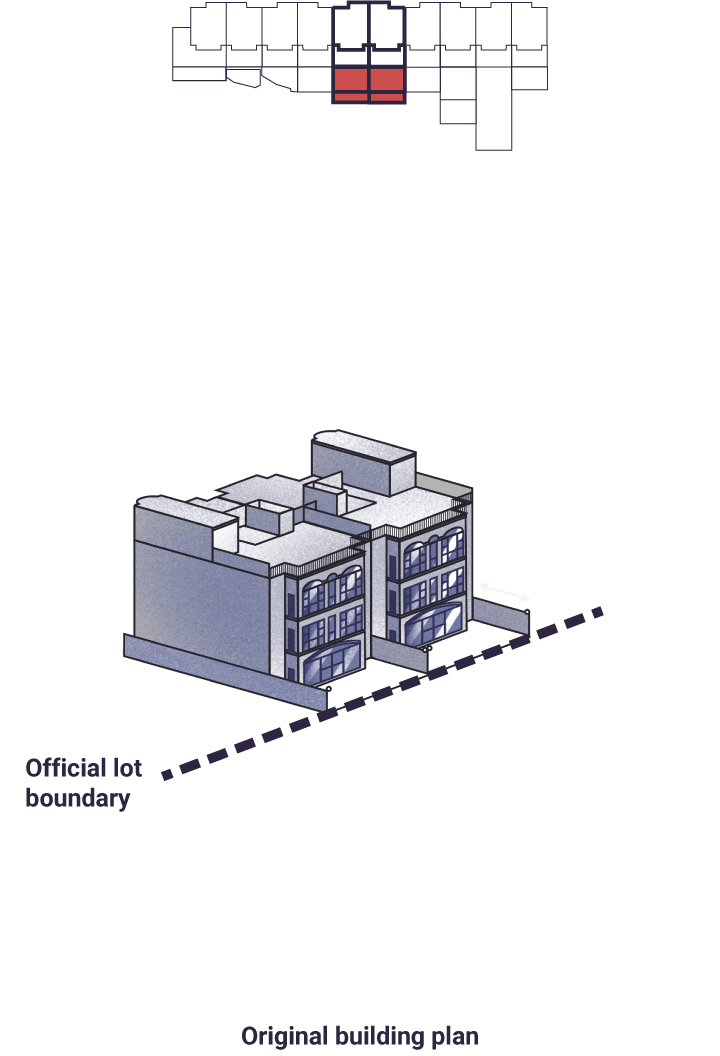
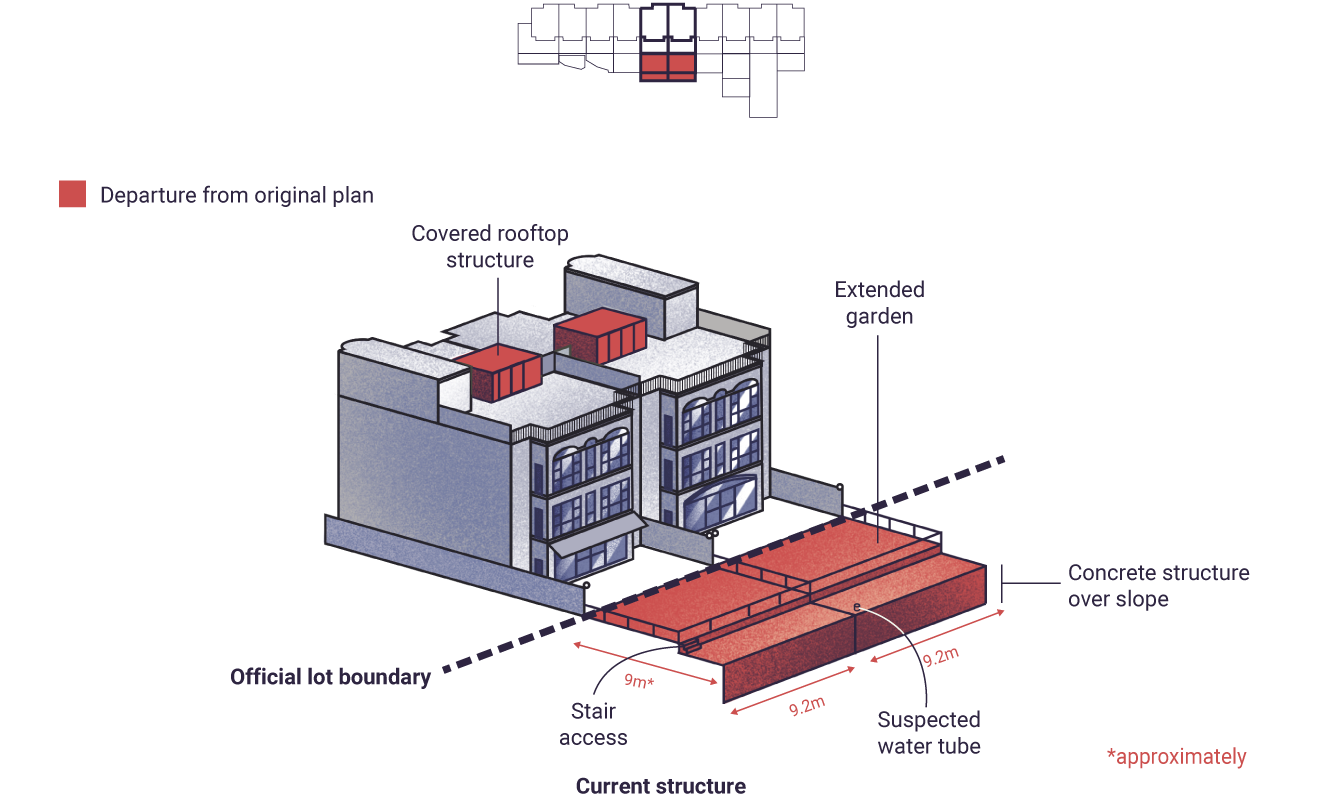
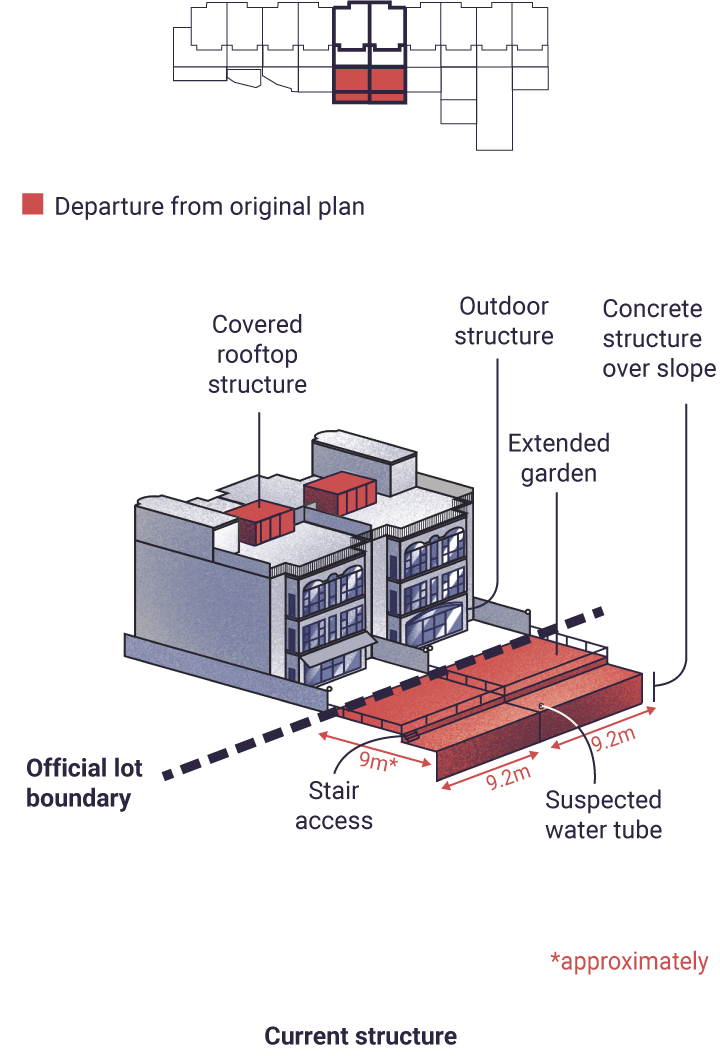
Two building professionals say any additional load is bound to affect slope stability and the extra concrete structures at both houses may indicate the presence of basements.
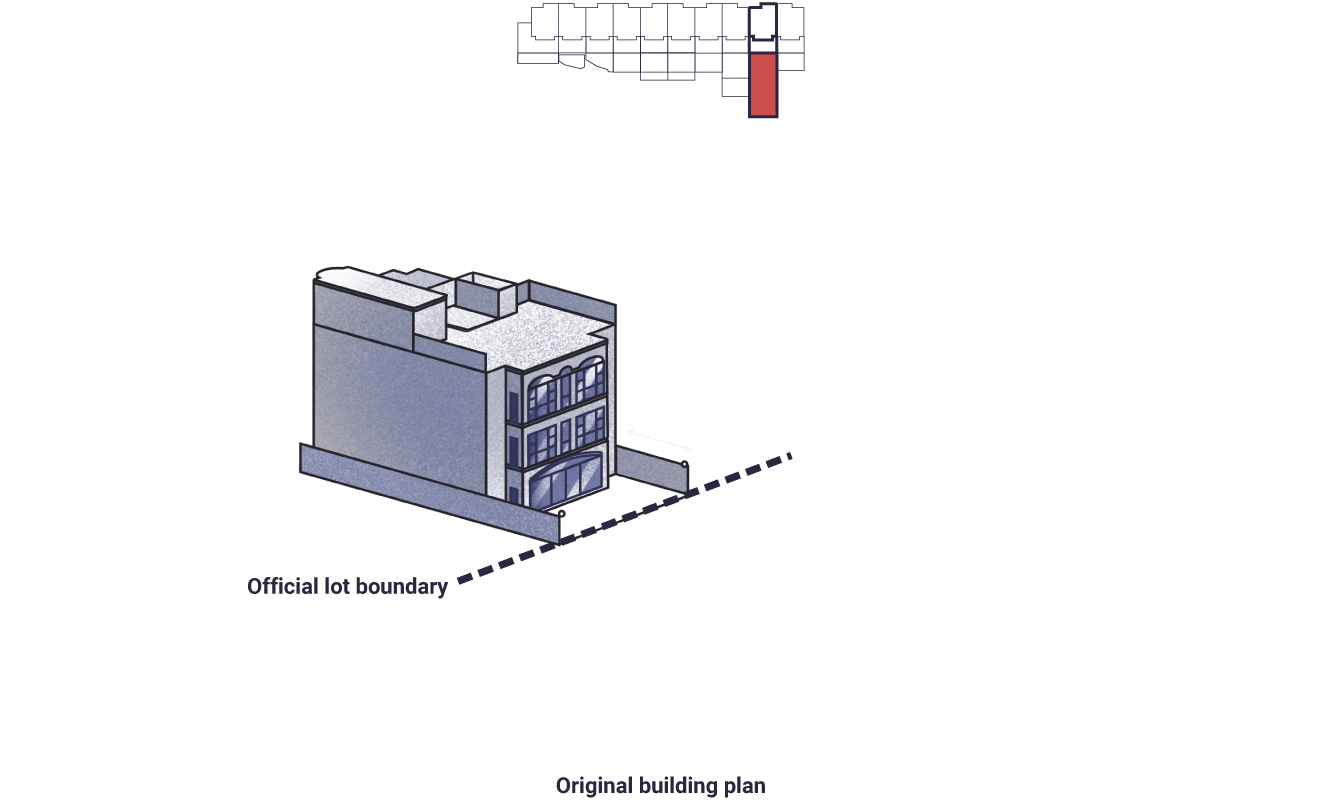

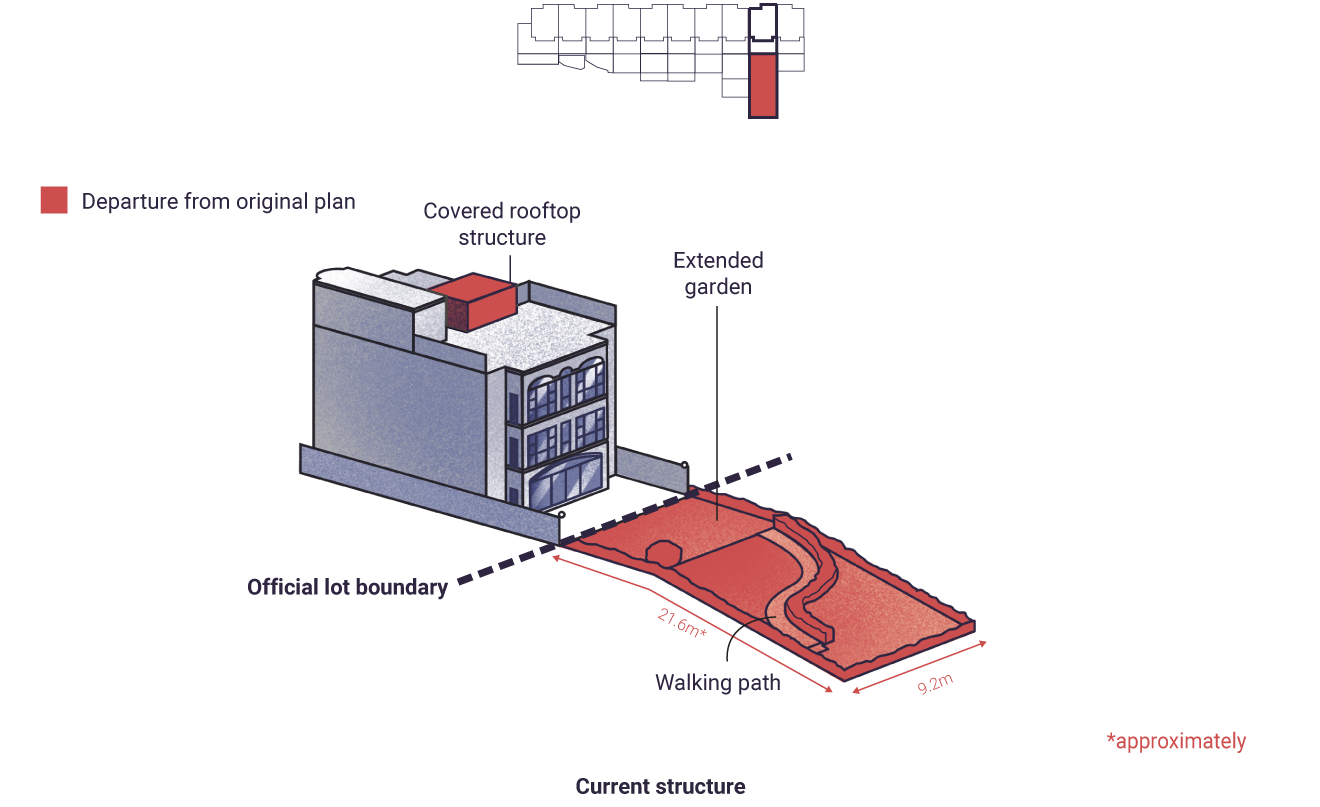
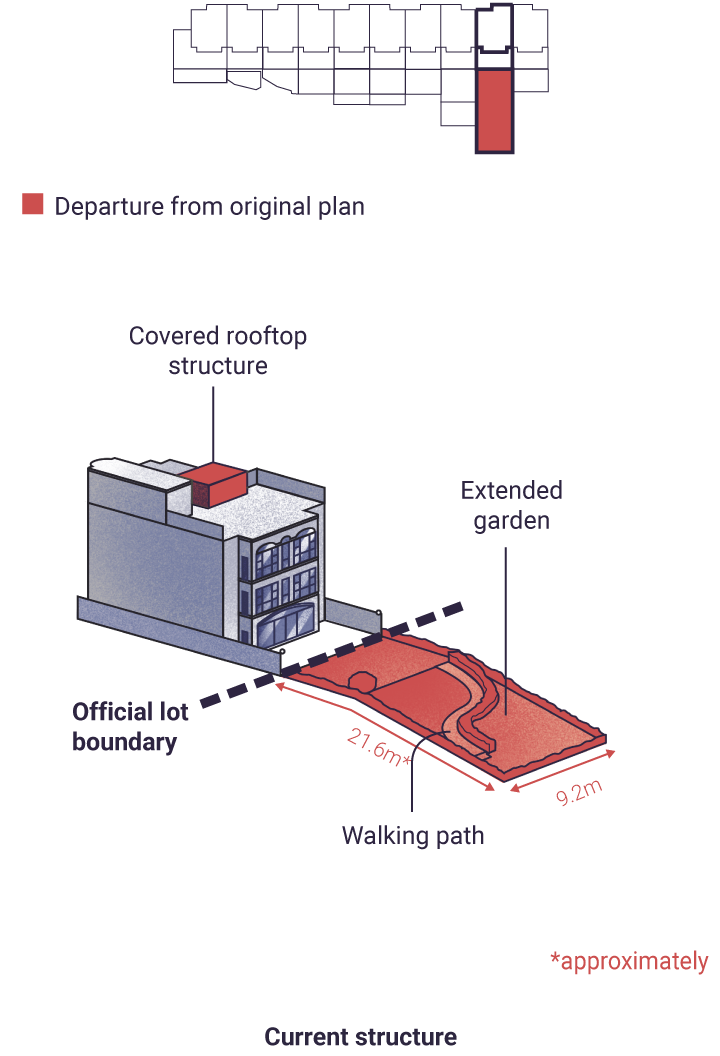
Centaline Surveyors executive director James Cheung King-tat says some buyers may be willing to pay for a larger living space but with a discount on the unauthorised area, such as half of the price per square foot.
For example, if a 3,000 sq ft house is priced at HK$90 million (US$11.5 million), or HK$30,000 (US$3,836) per square foot, a 1,000 sq ft illegal extension can yield an extra HK$15 million (US$1.92 million) if the buyer asks for a 50 per cent discount.
Cheung says the additions can also generate extra rental income as tenants may pay more for the extended space, given that they do not bear the legal responsibilities and only have to move out if there is enforcement action.
The Redhill Peninsula landslide
Unauthorised building works at the luxury Redhill Peninsula estate, just below Villa Rosa, sparked the latest land grab saga.
The day after the record-breaking rains lashed the city on September 7 and 8, 2023, building authorities were notified of the landslide at Redhill Peninsula, which exposed unauthorised works and illegal occupation of government land at four houses. The government moved to issue removal orders to the owners.
Since then, authorities found another 70 of the 85 seaside homes had extended beyond their legal limits, had built unauthorised structures, or had undertaken both add-ons.
AREA AFFECTED BY THE LANDSLIDE
The estate’s 256 buildings and houses provide a combined 494 flats.
Unauthorised structures add extra load to the government-owned slope and compromise the safety of buildings and the land itself.
SEPTEMBER 7 to 8, 2023 | THE DAYS OF THE GREAT RAIN
During the downpour, the city logged its highest hourly rainfall of 158.1mm since records began in 1884.
The city recorded 26 landslip warnings between 2014 and 2023, five more than the previous decade, amid rising levels of rainfall.
Landslide area in the Redhill Peninsula
Experts say the illegal structures at the four seafront houses, three of which were unlawfully occupying government land, may have destabilised the soil, which was then further affected by the rainstorm.
Heavy rainfall and the geology of the area are also believed to have contributed to the landslide, but authorities are still investigating the exact causes.
The citywide downpour hit on the night of September 7. The Observatory first issued its lowest-tier rainstorm warning at 9.25pm and escalated it to the highest level within 100 minutes, eventually lasting for 19 hours until the next afternoon.
Authorities recorded 75 landslide reports – including the one in the Redhill Peninsula – as of midday on September 10.
FIX IT OR FACE THE MUSIC
The government has demanded homeowners fix the violations within 60 days or 150 days, depending on their severity. Those who fail to comply on time without a reasonable excuse face prosecution.
Owners of houses No 70, 72, 74 and 76 will also have to foot the bill of the slope repair works if their illegal structures are found to have triggered the landslide.
PROSECUTIONS OVER UNAUTHORISED BUILDING WORKS IN THE PAST DECADE
The Buildings Ordinance provides hefty penalties for convictions of unauthorised construction, with maximum fines of HK$400,000 and jail terms of up to two years.
But Vincent Ho Kui-yip, former president of the Hong Kong Institute of Surveyors, says parties involved such as professionals and construction companies are often not easily linked to any solid evidence as paperwork is kept deliberately sparse.
Instead, the government is left to issue statutory removal orders to house owners.
HOW THE PENALTY PROCESS WORKS
The government enforces relevant laws through the Buildings Department and Lands Department. The former regulates structures on private land, while the latter is responsible for managing unleased government land.
But analysts say the government’s leniency and lax law enforcement are some of the key reasons behind its failure to eradicate illegal structures.
An analysis by the Post of the Buildings Department data* shows that criminal prosecutions have been made in at least 81 cases of unauthorised structures since 2013. Only 14 cases concern luxury residences, with the rest mainly relating to other buildings.
*The Buildings Department does not keep an open tally of all related prosecutions, only publishing more serious cases in which fines slapped on owners go beyond a certain level.
TOP 5 PENALTIES IN PAST 11 YEARS
A look at the heaviest fines meted out to property owners shows that many fail to rectify violations.
FINES DWARFED BY RENTAL INCOME
Using the Discovery Bay case as an example, the owner was fined an amount estimated to be about 17 per cent* of the property’s annual rental income.
*Based on average monthly rental of HK$78,333 for houses in Discovery Bay listed on Centaline Property’s website in Jan 2024
PAST SCANDALS AMONG THE POLITICAL CLASS
The problem of illegal structures has persisted over the years, at times landing high-level officials in hot water.
Henry Tang Ying-yen | Former chief secretary
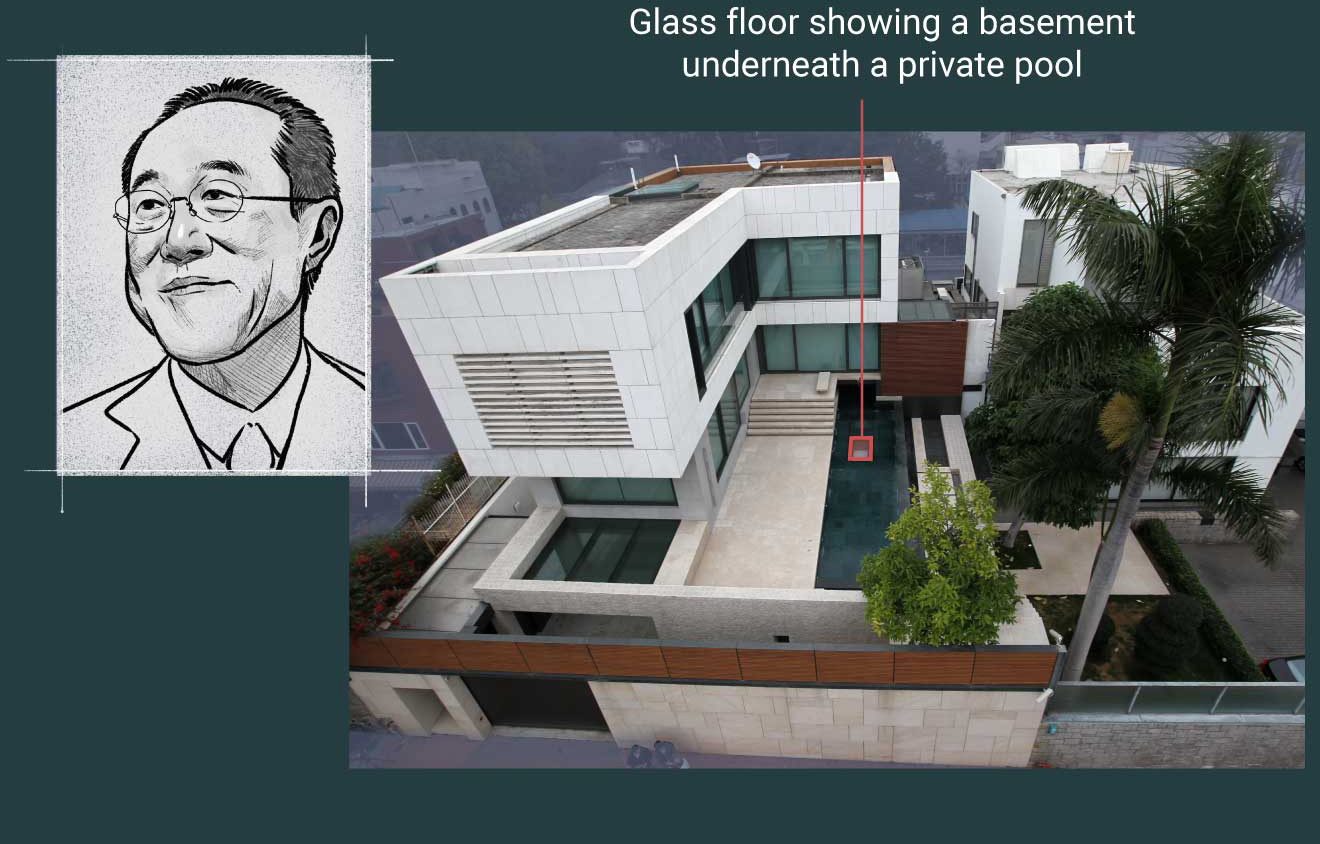
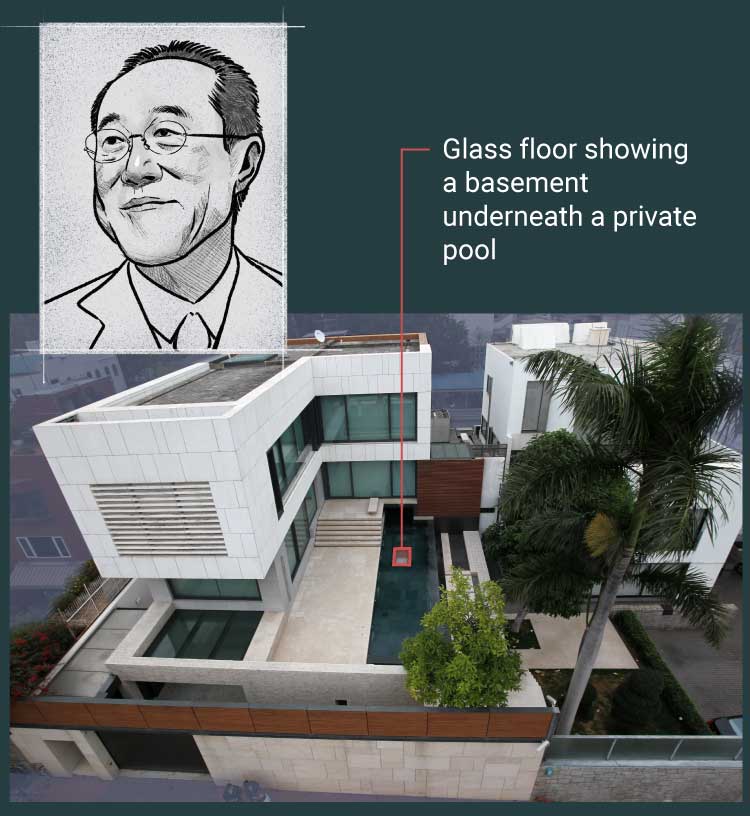
The discovery of an illegal 2,300 sq ft basement, reportedly replete with a wine cellar and a Japanese bath, in Henry Tang’s Kowloon Tong home eventually cost him his election bid for the city’s top job in 2012.
Teresa Cheng Yeuk-wah | Former justice secretary
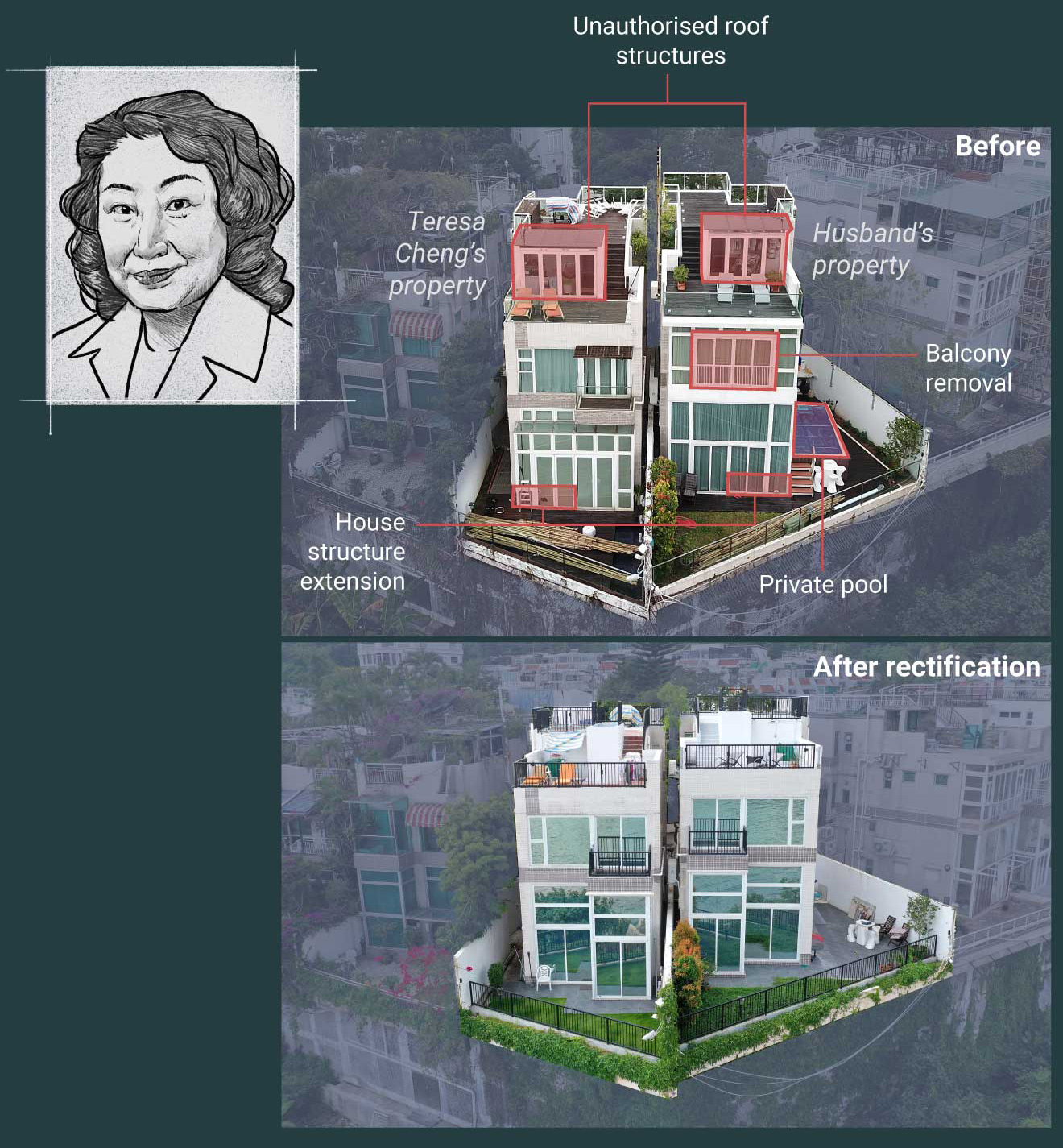

A scandal erupted in 2018 when the adjoined homes of then justice secretary Teresa Cheng Yeuk-wah and her husband in Tuen Mun were found to have 10 illegal extensions.
The added structures, which together added up to 1,800 sq ft, were estimated to be worth HK$35 million. Cheng has degrees in law and engineering, and co-wrote a book on construction law.
More than four months after the Redhill Peninsula landslide,
the slope remains barren and some seaside houses
are seen with scaffolding and safety nets
following the government’s issuing of 74 removal
orders and notices since September.
More than four months after the Redhill Peninsula landslide,
the slope remains barren and some seaside houses are seen with
scaffolding and safety nets following the government’s
issuing of 74 removal orders and notices since September.
Associate Creative Director Marcelo Duhalde
Filming Daniel Suen
Additional web development Dennis Wong
Editing Kieran Cash
Sources: National Academy of Economic Strategy, CASS (NAES, CASS), United Nations Human Settlements Programme, UN-HABITAT, safecities.economist.com, Numbeo Cost of Living database, GeoInfo Map, Hong Kong Map Service, The Buildings Department's BRAVO system
All drawings are for illustrative purposes only and are not to scale. They are based on photographs and footage taken by the SCMP in its research. Parts and structures not recorded in the approved building plans as registered in the Buildings Department are marked in red. All images are edited and intended only to provide a general overview of the research outcomes. Some are processed with computerised imaging for clarity. None shall constitute any legal or professional advice, judgment or interpretation and should not be relied on or treated as a substitute for specific advice relevant to particular structures or circumstances. The SCMP shall not assume any liability arising from the use of the above or reliance upon its contents.
Footage of suspected unapproved structures at Seaview Villas and Villa Rosa was recorded in November 2023, with the Post returning to the sites in January of this year to check if they were still up. Clips of Flamingo Garden shown here were filmed last month.